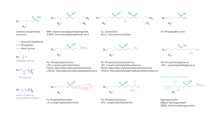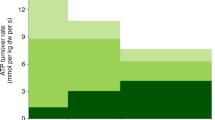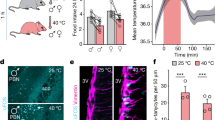Abstract
Because it is so tall, the giraffe, Giraffa camelopardalis, provides an important animal model for investigating adaptive mechanisms to orthostatic (gravitational) pressure changes. Previous physiological studies of the giraffe have concentrated on arterial blood pressures in the heart and neck1–3. Briefly, these investigations revealed that arterial pressure near the giraffe heart is about twice that in humans, to provide more normal blood pressure and per-fusion to the brain. Another important question is that of how giraffes avoid pooling of blood and tissue fluid (oedema) in dependent tissues of their extremities. As monitored by radiotelemetry, the blood and tissue fluid pressures that govern transcapillary exchange vary greatly with exercise. These pressures, combined with a tight skin layer, move fluid upward against gravity. Other mechanisms that prevent oedema include precapillary vasoconstric-tion and low permeability of capillaries to plasma proteins.
This is a preview of subscription content, access via your institution
Access options
Subscribe to this journal
Receive 51 print issues and online access
$199.00 per year
only $3.90 per issue
Buy this article
- Purchase on Springer Link
- Instant access to full article PDF
Prices may be subject to local taxes which are calculated during checkout
Similar content being viewed by others
References
Goetz, R. H. et al. Circulation Res. 8, 1049–1058 (1960).
Van Citters, R. L., Kemper, S. & Franklin, D. L. Comp. Biochem. Physiol. 24, 1035–1042 (1968).
Patterson, J. L. Jr et al. Ann. N.Y. Acad. Sci. 127, 393–413 (1975).
Starling, E. H. J. Physiol., Lond. 19, 312–326 (1896).
Hargens, A. R. in Handbook of Bioengineering (eds Skalak, R. & Chien, S.) Ch. 19, 1–25 (McGraw-Hill, New York, 1987).
Meltzer, D. G. A. et al. in Exotic Animals in Research (ed. Dawson, P.) 42–46 (S. Afr. Assoc. Lab. Animal Sci., Pretoria, 1985).
Aukland, K. & Johnson, H. M. Acta physiol. scand. 90, 485–490 (1974).
Hargens, A. R. et al. Microvasc. Res. 22, 177–189 (1981).
Henriksen, O. Acta physiol. scand. Suppl. 450, 1–48 (1977).
Burton, A. C. Physiology and Biophysics of the Circulation 2nd edn, 97–103 (Year Book, Chicago, 1972).
Badeer, H. S. Comp. Biochem. Physiol. 83A, 207–211 (1986).
Pettersson, K. et al. Proc. XXX Congress, IUPS XVI, P414.16 (1986).
Sejersted, O. M. et al. J. appl. Physiol. 56, 287–295 (1984).
Mellander, S., Öberg, B. & Odelram, H. Acta physiol. scand. 61, 34–48 (1964).
Noddeland, H., Aukland, K. & Nicolaysen, G. Acta physiol. scand. 113, 447–454 (1981).
Williamson, J. R., Vogler, N. J. & Kilo, C. Am. J. Pathol. 63, 359–370 (1971).
Author information
Authors and Affiliations
Rights and permissions
About this article
Cite this article
Hargens, A., Millard, R., Pettersson, K. et al. Gravitational haemodynamics and oedema prevention in the giraffe. Nature 329, 59–60 (1987). https://doi.org/10.1038/329059a0
Received:
Accepted:
Issue Date:
DOI: https://doi.org/10.1038/329059a0
This article is cited by
-
The cardiovascular challenges in giraffes
Journal of Muscle Research and Cell Motility (2023)
-
The effects of gravity and compression on interstitial fluid transport in the lower limb
Scientific Reports (2022)
-
Giraffe genome sequence reveals clues to its unique morphology and physiology
Nature Communications (2016)
-
Flow and oscillations in collapsible tubes: Physiological applications and low-dimensional models
Sadhana (2015)
-
Autonomic control of heart rate during orthostasis and the importance of orthostatic-tachycardia in the snake Python molurus
Journal of Comparative Physiology B (2014)
Comments
By submitting a comment you agree to abide by our Terms and Community Guidelines. If you find something abusive or that does not comply with our terms or guidelines please flag it as inappropriate.



